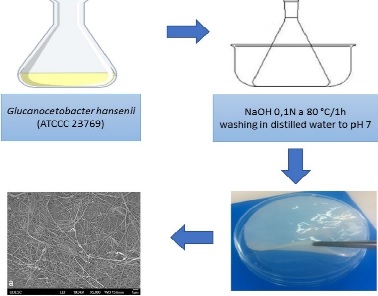
Ana Paula Testa Pezzin
University of Joinville Region (UNIVILLE), Brazil
Title: Recent advances in bacterial nanocellulose for different applications
Biography
Biography: Ana Paula Testa Pezzin
Abstract
The last years of advances in research have demonstrated the importance and potential of biopolymers for a variety of applications, particularly for biopolymers produced by microorganisms, including bacterial nanocellulose (BNC). These polymers can be biosynthesized by bacteria of some genera, but the most efficient producers of cellulose belong to the genus Gluconacetobacter, that secrets an abundant 3-D network of cellulose fibrils. There are two main methods for producing BNC: static culture, which results in the accumulation of a thick, leather-like white BNC pellicle at the air-liquid interface, and stirred culture, in which cellulose is synthesized in a dispersed manner in the culture medium, forming irregular pellets. BNC can also be synthesized from a variety of substrates such as glucose, sucrose, fructose, glycerol, mannitol, among others. In this way it is possible to modify and control the physical properties of the cellulose during its biosynthesis. Factors such as yield, morphology, structure, and physical properties may be affected by the method of production and culture medium used. The thickness, color and transparency of the membrane can be controlled by means of the culture time of the bacterium. The BNC appears as a competitive alternative, having as main characteristics: high crystallinity, high tensile strength, elasticity, durability, hydrophilic potential (retention capacity and water absorption - about 98% to 99% of its volume is composed of liquids). In the food industry, it is used in the production of coconut cream, ice cream, snacks, sweets, stabilizers for emulsions and foams. In the cosmetics industry BCN is used as moisturizers and astringents. BNC is also used as an additive of high quality papers, membranes for high quality audio devices, electronic papers (e-papers), diaphragms for eletroacustic transducers, liquid crystal displays, OLED support, ultrafiltration membranes (water purification) and membranes for mineral oil recovery. In the biomedical area BCN is suitable for tissue regeneration, drug delivery systems, vascular grafts, scaffolds for tissue engineering, artificial blood vessels and microvessels, artificial vascular implant, dental implants, artificial skin, dressing for wounds and burns, allowing the transfer of medications to the wound while serving as an effective physical barrier against external infection. In the materials area NCB whiskers can also be used as reinforcement in nanocomposites.


